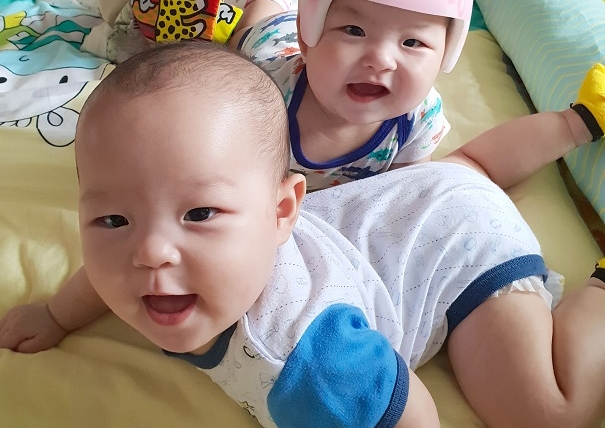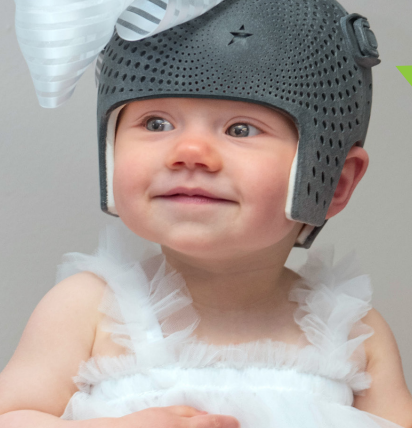For parents of babies diagnosed with positional plagiocephaly or brachycephaly, a cranial helmet is often prescribed to help reshape their child’s head. While this headgear is effective at correcting the flattened or misshapen areas, it can understandably cause stress and worry for parents when it comes to their baby’s sleep. The good news is that babies can sleep soundly while wearing their cranial helmets with some preparation and patience.
First and foremost, please consult your baby’s pediatrician, neurosurgeon, or orthotist to ensure the helmet is fitted correctly. An ill-fitting helmet can rub and irritate the skin, making sleep difficult. During regular helmet adjustments, please discuss any sleep concerns and ask for specific recommendations to help your baby rest easily.
Establish a comforting bedtime routine that includes softly singing or reading a story to your baby while rocking or cuddling them before laying them down to sleep. This primes them for sleep, and the helmet then becomes part of this nurturing ritual. Some healthcare providers may suggest swaddling your baby to make them feel secure and contained.
Stuart Weiner, CPO, LPO, and director of Cranial Center of New Jersey, says, “Swaddling may seem like a good idea, but it could lead to overheating the baby during their sleep.”
Expect some sleep challenges for the first 1-2 weeks as your little one gets used to wearing the helmet. Babies may fuss and cry at bedtime or wake frequently during the night. Be patient and consistent with your bedtime routine, provide extra snuggles, and consider letting your baby nap in your arms or a baby carrier for now. As they adjust, disrupted sleep should improve.
During the day, allow for tummy time without the helmet so your baby’s head shape isn’t constantly affected on one side. Tummy time also helps strengthen neck muscles to keep your baby’s head upright as their skull reshapes. Avoid letting your baby sleep on their tummy or side before discussing it with your doctor. Back sleeping is safest for flattening the rounder back of the head.
Strategically, time naps to help with nighttime sleep. Take note if your baby catnaps late in the day but has trouble sleeping at night. An earlier, sound nap makes for better zzz’s come bedtime. White noise, swaddling, pacifiers, and baby massage can also encourage restful naps.
Adjust room temperature and clothing to prevent overheating. Babies cannot regulate their body temperature well and may grow hot in helmets, disrupting sleep. Dress your baby lightly in breathable clothing and use light blankets. Keep bedroom temperatures around 65-70 degrees Fahrenheit. You can also try a mesh helmet liner.
While it takes patience initially, remember that the helmet is temporary but the benefits of adequately reshaping your baby’s head last a lifetime. Work closely with your pediatrician if sleep struggles persist beyond 2-3 weeks. Peaceful slumber will soon prevail with a commitment to a calming bedtime routine and attentiveness to your baby’s needs.



